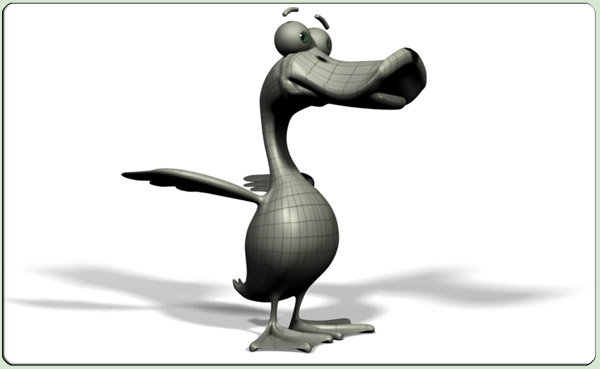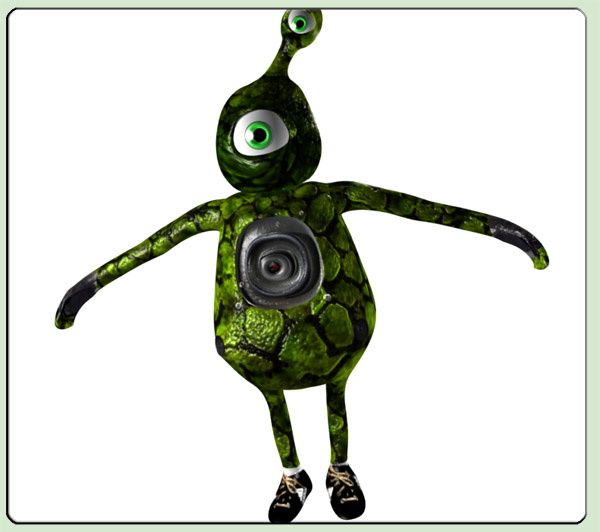CHARACTER BUILDING
ARTD 471 |
3D Computer Imaging
What makes for a memorable character in visual media today? This and many other questions are being asked and answered as University of Oregon Digital Arts students develop 3D characters for 'ARTD 471 - 3D Computer Imaging'. Led by faculty instructor John Park, a group of seven students have decided to repeat the class and apply their 3D skills towards designing, developing, texturing and animating 3-dimensional characters. Here are their creations and a snapshot of the ongoing process of bringing them to life.
(To view other work from ARTD471, see this link)
Wallace by Adam Alexander
in development Winter 2010

The sketch phase...

Basic modeling and texturing. Note the particle system on the image to the right. This is used to achieve a hairy look.

The next process was to insert a 3d skeletal system (seen as pink shapes embedded in body in right image).

Wallace is rigged (at least well enough to emote his musical preference)
Digital Arts student Adam Alexander is in the process of creating the most charismatic, purple, waddling troll out there. Enter Wallace...the above creation. Don't mind the under bite! See more of Adam's work HERE.
Software used: Blender 3D, Photoshop
Duck by Kyle Knapp
in development Winter 2010

Sketch phase....

Initial modeling - notice that the fewer the polygons in the model, the easier & faster it will be to animate down the road.

Smoothing,addition of eyes and initial texture work.

The above process is called 'Weight Painting' and it allows an animator to determine what parts of the skin of a mesh will move with each bone inside of the model. Blue = 0% influence, Red = 100% influence and there is a full spectrum of influence in between those colors.

Current state of the duck where Kyle is able to pose the character into any position (needed for animation). Kyle Knapp's other work can be found HERE.
Software used: Blender 3D, Photoshop
RoboCrab by Brian Aebi
in development Winter 2010

Inked sketches of the main form and function of the crab character. Note there have been changes made since the sketch phase.

Modeling process...

Shading vs structure. This image shows a fade between a shaded view of the character (left) and the wire frame structural representation of the same body (right).

Halfway through the texturing ('unwrapping') process...

Here is the current state of the crab with textures, added scuff marks and one very large claw. To see more of Brian Aebi's work, see HERE.
Narrative Sketch by Eric Chandler
in development Winter

First character sketches. Note gear-like shapes and patterns in clothing. This motif will continue in later environment design.

Rough models of adversaries in the narrative...

Rough modeling of the backdrop of the animation...

Eric spent a good deal of time planning out the story, camera angles, sequence and sounds by creating a series of story boards.

Another character that will make an appearance in Chandler's animation....
To see more of Eric Chandler's work, see HERE.
Audiophile Alien by Ryan Mowery
in development Winter 2010

Sketch phase for the audiophile alien...

Transitioning from sketch to model (notice Ryan only models half and uses a tool that automatically mirrors the other half)

The low-polygon mesh with a smoothing modifier over it.

Textured mesh with a pair of brand new shoes!
To see more of Ryan Mowery's work, check out his 3D blog HERE.
|

